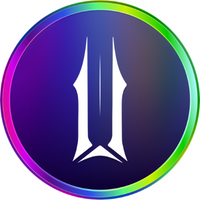Deep Dive
YGG began as a decentralized network of gaming guilds, providing infrastructure for players to access blockchain games, earn rewards, and build on-chain reputations. Key programs like the Guild Advancement Program (GAP) offer quests and tournaments (e.g., Splinterlands competitions) where players earn YGG Points and tokens. The platform emphasizes regional guilds and partnerships with over 80 games (CoinMarketCap).
2. Web3 Game Publishing Arm
In 2025, YGG expanded into game publishing with YGG Play, launching titles like LOL Land – a browser-based game on AbstractChain where players earn $YGG tokens. This shift allows YGG to directly shape Web3 gaming economies, integrating NFT communities like Pudgy Penguins and offering prize pools (e.g., $10M for LOL Land) to drive engagement (Kanalcoin).
3. Sustainable Ecosystem Design
YGG employs a $7.5M ecosystem pool for yield-generating DeFi strategies and token buybacks (e.g., $518k buyback in August 2025 from game revenues). Its treasury management focuses on reducing reliance on token issuance while funding community initiatives and sub-guilds, creating a self-reinforcing gaming economy (CoinMarketCap).
Conclusion
Yield Guild Games bridges traditional gaming communities with Web3 economies through guild infrastructure, game publishing, and financial tools. Its evolution from a player guild to a publisher highlights a strategic focus on sustainable ownership models. Can YGG’s “casual degen” gaming approach attract mainstream players while maintaining crypto-native value?





 Most Visited
Most Visited Community Sentiment
Community Sentiment Chain Ranking
Chain Ranking Bitcoin Dominance
Bitcoin Dominance Market Cycle Indicators
Market Cycle Indicators Relative Strength Index (RSI)
Relative Strength Index (RSI) Bitcoin Treasuries
Bitcoin Treasuries BNB Treasuries
BNB Treasuries Overall NFT Stats
Overall NFT Stats Upcoming Sales
Upcoming Sales Signals
Signals Trending
Trending New
New Gainers
Gainers Meme Explorer
Meme Explorer Top Traders
Top Traders Feeds
Feeds Lives
Lives Articles
Articles Research
Research